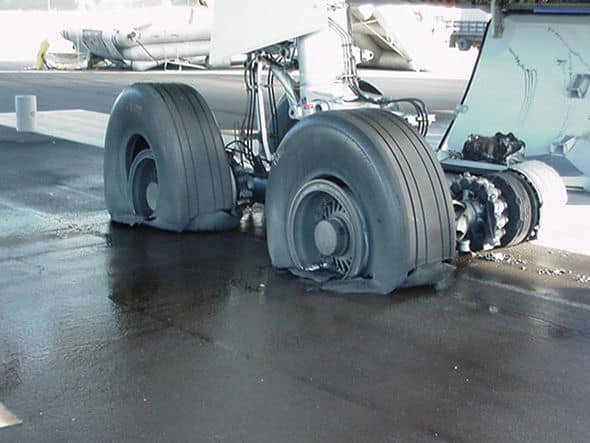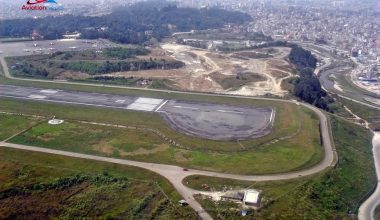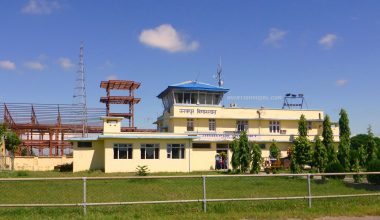Twenty-one years ago, at the turn of the 21st century, on August 24, 2001, Air Transat Flight 236 survived a rare aviation disaster that could otherwise culminate in one of the deadliest air accidents in the history of aviation. The Airbus A330-243 operating the transatlantic flight TS 236 bound for Lisbon, Portugal, from Toronto, Canada, made the longest passenger aircraft glide without engines, saving the lives of 304 people onboard. The aircraft ran out of fuel due to leaking engines and lost all engine power while still being a thousand miles away from its intended destination. But still, it managed to glide for nearly 75 miles (121 kilometers0 to a successful emergency landing in Lajes Air Base in the Azores.
Background of Air Transat Flight 236
Air Transat Flight 236 was a scheduled transatlantic service from Toronto Pearson International Airport to Portela Airport in Lisbon, carrying 293 passengers and 13 crew on August 24, 2001. The aircraft deployed was a European-built two-year-old Airbus A330-243 (registered as C-GITS) powered by two Rolls-Royce 772B-60 engines. In the cockpit of Airbus A330 C-GITS was a veteran, Captain Robert Piche, with an aeronautical flight experience of 16,800 hours, and First Officer Dirk DeJager, who had accumulated 4,800 flight hours.

Fuel starvation and engine failure
The aircraft departed Toronto at 20: 52 local time and continued its journey across the Atlantic for almost four hours when it started to leak fuel due to a fracture in a fuel line to its number 2 engine. About an hour later of developing a fuel leak at 05:36UTC, pilots obtained a warning of fuel imbalance.
Not realizing the fuel was leaking through the fractured fuel line, the captain transferred fuel from the working engine to the failing engine number 2. The crisis magnified as the transferred fuel leaked through the ruptured line at about one gallon per second. As the situation worsened with a drop in oil temperature and a rise in oil pressure for the number 2 engine, the pilots decided to divert the aircraft to the nearest landing site, i.e., Lajes Air Force Base in the Azores, at 05: 45 UTC followed by fuel emergency declaration three minutes later.

Soon, the fuel-starved right engine flamed out while still flying over the Atlantic Ocean at 39000 feet, 150 nautical miles away from Lajes. The pilot then began the aircraft descent to 33,000 feet and sent a mayday to San Maria ATC ten minutes later. The plane could still fly safely on one engine until the other engine also ran out of fuel and flamed out. The aircraft was still 75 miles distant from performing a tire-bursting emergency landing in the Azores when both of its turbofan engines, capable of delivering 71,100lbf thrust each, flamed out.
Also Read: Canadian Airlines Air Transat resumes flights after six months
With both engines dead, the only emergency power the aircraft had in order to fly further was from a Ram Air Turbine, which spins in the wind to power instruments and hydraulics. The pilots in the cockpit maneuvered the plane into a glide while keeping the plane aloft and balanced, hoping to reach the Azores. For 20 minutes after the engines cut out, the twin-engine Airbus A330-200 successfully made a no-power glide to the earth covering 75 miles. The modern jetliner made the longest passenger aircraft glide without power, becoming the first commercial airliner in history to glide that longer, i.e., 75 miles.
Descending at thousands of feet a minute, the A330 hit the ground at Lajes, around 1030 ft past the threshold of runway 33, at a speed of around 200 knots. It was a tire-bursting emergency touchdown at a Portuguese air base on Terceira Island after the loss of antilock brakes on the wheels. Air Transat Flight 236 survived a huge near-disaster without losing human lives. The engine-disabled aircraft suffered structural damage to the main landing gear (it gauged deeply into the tarmac) and the lower fuselage as a result of the hard emergency landing of the plane.
What happened next?
The Air Transat Flight 236 that made an emergency landing at Lajes Air Force Base was able to save the lives of all passengers and crew onboard. While all passengers could scramble out of the aircraft, fourteen passengers and two crew members suffered minor injuries during the evacuation. Two passengers sustained serious injuries and were immediately taken to hospital.
The investigation revealed that the lack of adequate clearance between hydraulic lines and the fuel line due to the installment of an incorrect part in the hydraulic system by Air Transat’s maintenance staff caused the rupturing of the fuel line, resulting in a fuel leak. After the investigation of the incident, the Canadian carrier Air Transat was held liable for the accident and fined the largest penalty in Canadian civil aviation history, amounting to CAD 250000.






